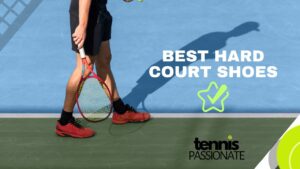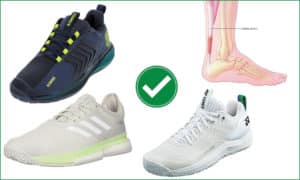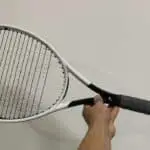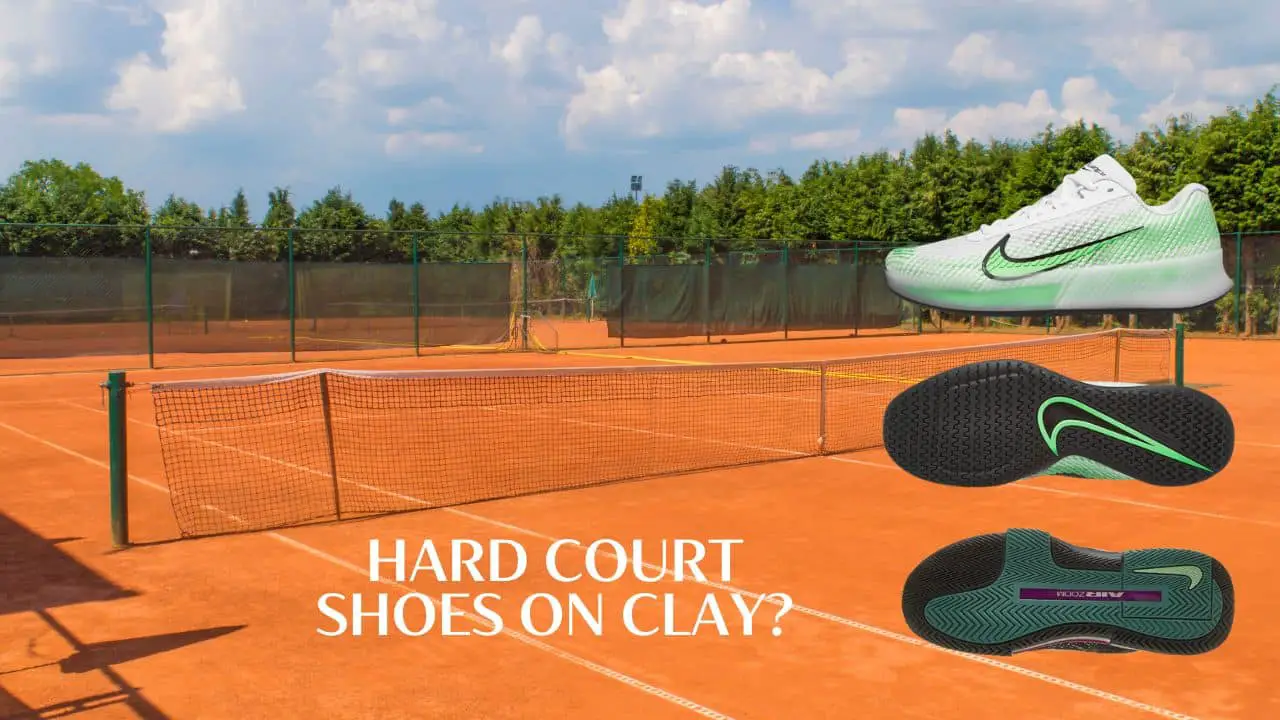
Can You Play On Clay With Hard Court Shoes?
We all know that you should bring clay court shoes in order to play tennis on clay. Of course, this is why they are called so.
But the question is whether you can use your hard court tennis shoes to play on clay, and still perform well.
In short, hard court shoes are often related to all court tennis shoes making them the most versatile. They can be used for clay but the modified outsole tread pattern can make them slippery as they don’t offer enough grip on the dirt.
We recommend getting clay court tennis shoes if you play regularly on clay.

Characteristics of Hard Court Shoes
What sets hard courts apart? Well, they stand out as the preferred surfaces for official tennis tournaments. To illustrate, 6 out of the 9 Masters 1000 tournaments and 2 out of the 4 Grand Slams take place on hard courts.
However, playing on hard courts isn’t a walk in the park. When you step onto a hard court for the first time, it can be quite intimidating, at least from a personal perspective. The ball comes at you fast, even with moderate strikes.
Hard courts are fast, so you must also be fast to get to the ball quickly. Unlike clay when you have much more time, you need to be agile and slide nicely.
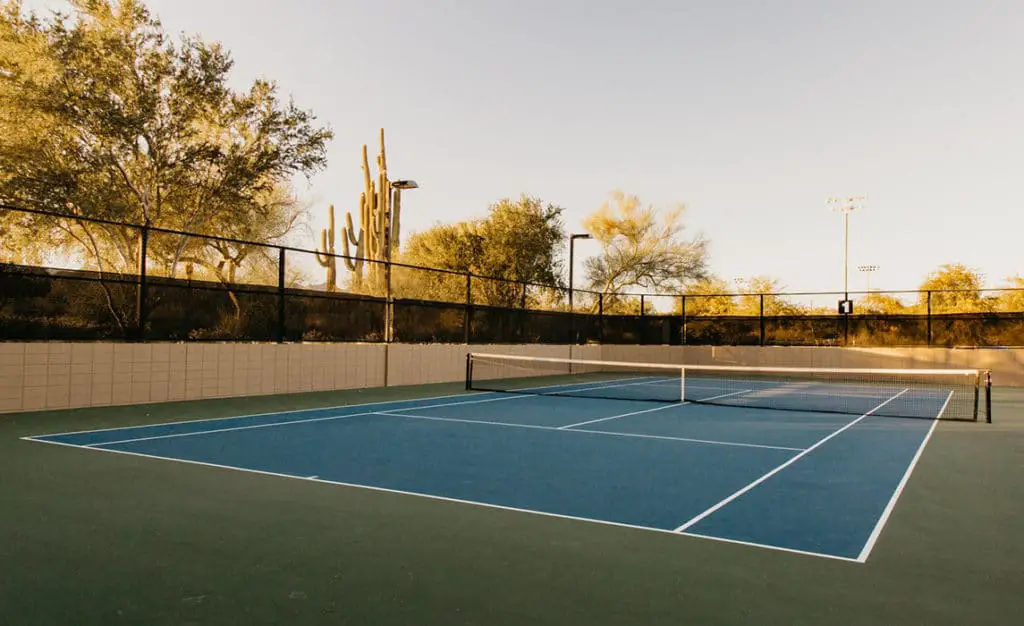
Tennis shoes that perform the best on hard courts have the following features:
- High level of cushioning
- High shock absorption
- Lightweight and agile
- Good traction
- Controlled sliding
- Sole durability
They also come with a modified herringbone pattern in the outsole rubber so that it gives the player good and controllable traction allowing him to slide accordingly.
To perform the best on hard courts, you should definitely pick one of the best hard-court tennis shoes. Find out more here.
Characteristics of Clay Court Shoes
What sets clay courts apart? A significant number of tournaments, including three Masters 1000 titles and one Grand Slam – the French Open, unfold on the red dirt.
Recognized for their characteristic red or green surface crafted from crushed brick, stone, or shale, clay courts offer a distinct set of challenges and advantages for tennis players.
Clay court shoes are designed specifically for playing tennis on clay courts, which have a surface made of red crushed brick, stone, or shale. These shoes offer several features that make them suitable for this particular playing surface.
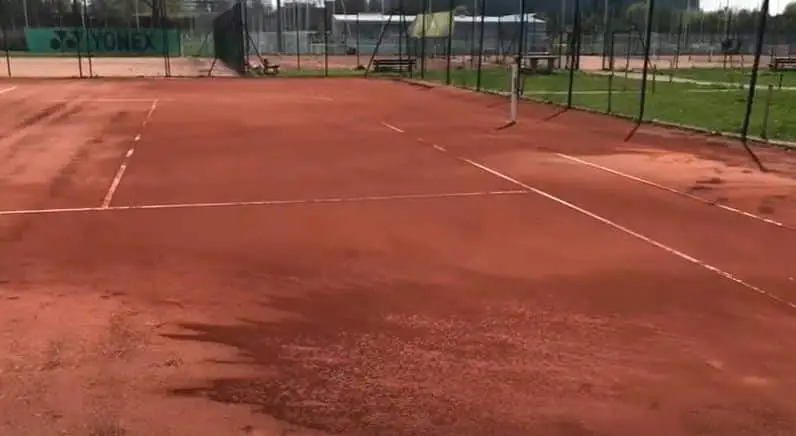
Tennis shoes that perform the best on clay courts have the following features:
- Herringbone tread pattern
- Overall stability
- Lateral stability
- Breathability
- Easy clay cleaning
Clay courts feature a herringbone tread pattern in the outsole that prioritizes grip to avoid slipping on the surface. The clay particles are trapped in the treads and the herringbone form helps get adequate traction.
We have a full guide for the best clay court tennis shoes to use.
The Difference
Here’s a simple table highlighting the key differences between clay court tennis shoes and hard court tennis shoes:

| Characteristic | Clay Court Tennis Shoes | Hard Court Tennis Shoes |
| Outsole Design | Herringbone or Zigzag Pattern | Multidirectional or Herringbone Treads |
| Traction | Enhanced for Sliding | Optimal Grip for Lateral Movements |
| Outsole Material | Resistant to Abrasion and Wear | Durable for Hard Court Surface |
| Durability | Focus on Resistance to Sliding Abrasion | Resistance to Surface Abrasion |
| Slip Resistance | Enhanced for Clay’s Slippery Nature | Designed for Firmness of Hard Surfaces |
| Breathability | Commonly Includes Breathable Materials | Emphasis on Cooling During Extended Play |
| Cushioning | Balanced Cushioning for Comfort and Support | Shock Absorption for Hard Court Impact |
| Supportive Design | Stability for Sliding Movements | Emphasis on Stability for Lateral Moves |
| Weight | Moderate to Lightweight | Lightweight for Speed and Agility |
| Versatility | Primarily Designed for Clay, Some Versatility | Often Suitable for Various Court Types |
| Non-Marking Soles | Essential to Preserve Court Quality | Prevents Scuff Marks on Hard Surfaces |
| Secure Fit | Ensures Stability During Slides | Snug Fit with Padded Collars for Comfort |
This table provides a quick overview of how clay court tennis shoes and hard court tennis shoes differ in their design and functionality, catering to the specific demands of their respective playing surfaces.
Verdict: So Is It OK to Use Hard Courts Shoes in Clay?
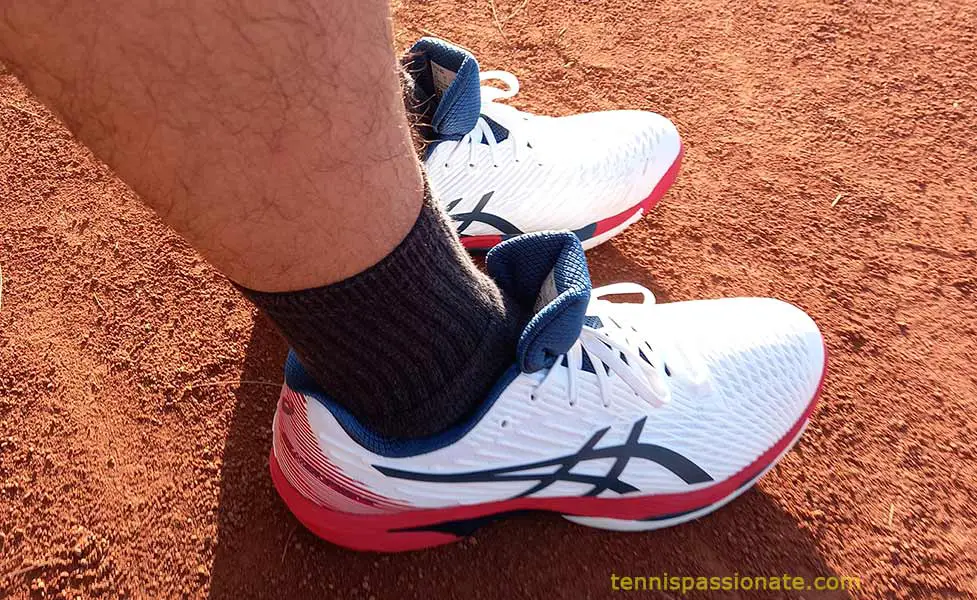
Yes, if you’re tight on budget, you can just bring your hard court shoes on clay and use them.
However, using the right shoes for the specific surface you’re playing on not only improves your performance but also helps prevent injuries, so it’s worth investing in a pair of clay court tennis shoes if you plan to play regularly on clay courts.
But if you decide to use hard court shoes on clay, please pay attention to these elements :
Sliding
Sliding can be tricky as hard-court tennis shoes can be slippery since they lack the friction that cement provides. You will only rely on your ability to control your slides.
Also, hard court outsoles have less space to accommodate clay particles. As a result, they will get saturated quickly making you lose grip on the court.
Tip: You should clean them more often before the match, and give them nice racquet strokes during the match to clear the dirt.
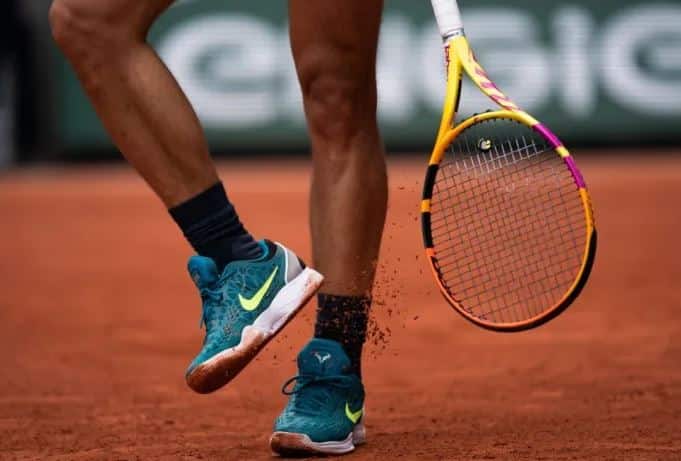
Stability
Stability is another important factor in clay shoes. Since the surface is soft, clay shoes need to be heavier and more stable by offering rigid elements in the upper and the shank.
This way you get good wrap and grip and also, better torsional protection to avoid any foot twisting inside.
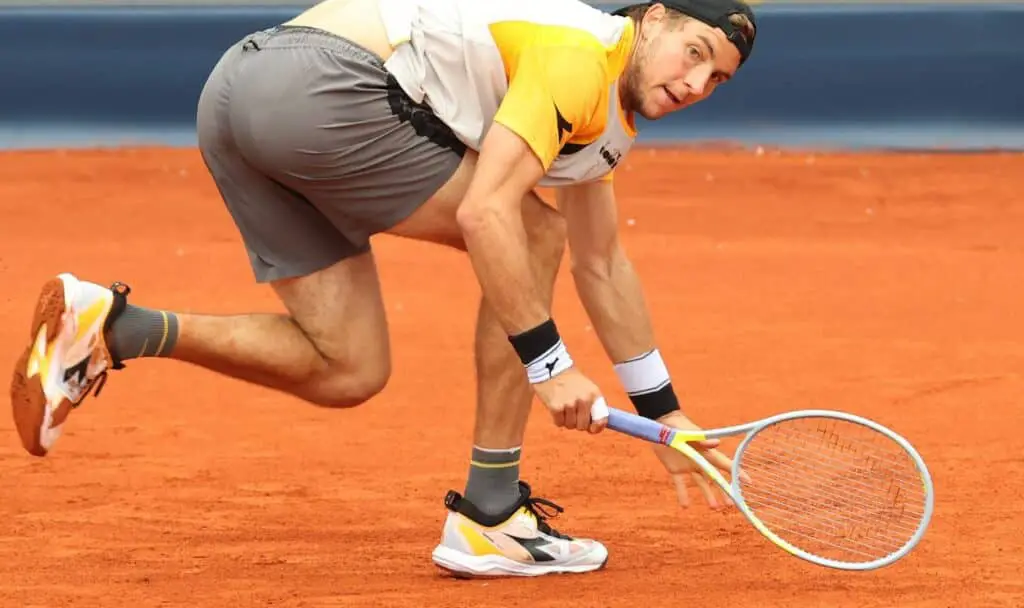
Hard court shoes can perform well on clay but be very cautious to avoid unnecessary slips especially when running and hitting the ball, which might lead to bad injuries.



